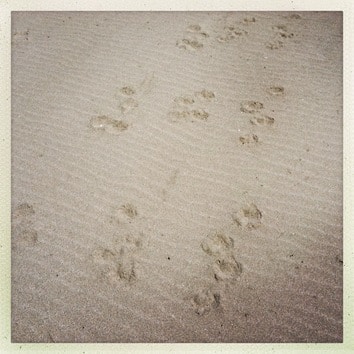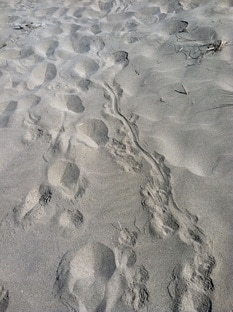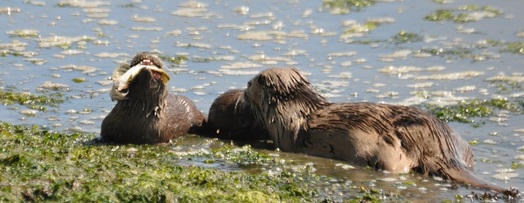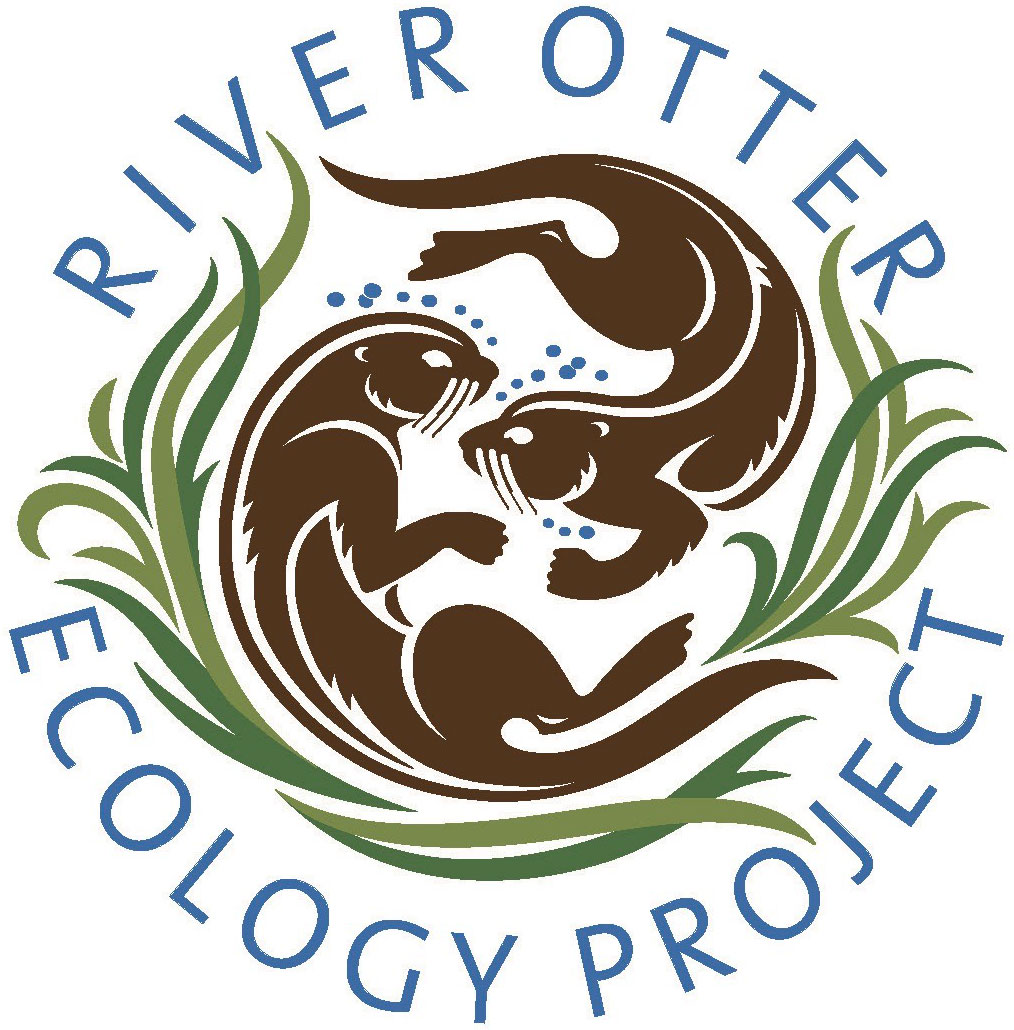by Paola Bouley, Co-founder, River Otter Ecology Project
August 13, 2012
Studying river otters can sometimes easily be mistaken for hanging loose on the beach — as researchers we walk, climb, and sometimes just sit, watch and record along some of the most beautiful coastal areas on Earth.

One of our new project member’s and expert tracker, Scott Davidson, had recently put this spot “on the otter map” for us. Scott had scouted out the area and detected quite a bit of otter activity — tracks and scat. The most wonderful part of the discovery were the tracks leading from the inland lagoon straight out across the beach and into the Pacific Ocean. It turns out, the otters on what looks like a daily basis make this migration back and forth from the Pacific Ocean, upland into the freshwater wetland.

Otters emerge from the surf. Photo: PRNS
Now it’s not that we don’t know river otters happily make part of their living in the marine environment— Northern Tomales Bay (one of our main study sites) is marine, although protected compared to the west shore open to the swell. And we’ve had reports of otters pouring out of the surf on Drakes Beach. Yet somehow, being able to follow in their footsteps from calm inland lagoon to the pounding Pacific Ocean surf is just pretty cool.
On almost any given day here, you can walk along the high-tide line and pick up tracks of otters that are moving back and forth, crisscrossing with the tracks of people, dogs, coyotes, raccoon, egrets, gulls and falcon. Some otter tracks lead to sea, others back to land in the hot sand dunes along the shore. Some otters move in groups, close together— maybe a mom and her two young? Others move solo.

I follow where the tracks lead on this particular day. And I have to laugh because as I am tracking into the dunes focused intensely on the precariously placed and shifted sands on the ground — some young children run right up in front of me paralleling the path of the otters straight up into the dunes and trampling any signs that might have been.
So I backtrack, head towards the sea, re-tracing their path. And it’s at the edge – where the sand and land meets the raging sea and where their tracks disappear into the surf — that I decided to sit, watch, wait… maybe I could be one of the lucky few to see them actually spill out of a big wave and trot on up the beach. It was really unlikely, but couldn’t resist trying.
As I sat there watching the pounding tide sweep up the beach, thoughts coursed through my head … about otters and their recent recovery across the Bay Area, about their role as top aquatic predators and sentinel species, and how they interact with the diversity of other species that regularly occur here — both predator and prey. And, how the public perceives and responds to top predators (generally not too well).

It’s an exciting time for the River Otter Ecology Project team. We are not only leading the 1st-ever study in the Bay Area documenting the recovery and status of river otters, but we are also working to tease apart and understand the ecology of these charismatic carnivores — understand what sustains them and how they move across the landscapes we know so well — from residential neighborhoods along the shore of San Francisco Bay to the national parks that span the coast north of the Golden Gate.

Pup feeding on a sculpin alongside mom and sibling. Photo by K. Bouley
One day I’ll be lucky to see an otter or three tumble out of a roiling Pacific wave, I’m sure. For now I’m grateful for the resilience of life when given the chance and for the recovery of both Peregrines and otters, and also content to focus on the signs — subtle and not so subtle — that tell their story.
